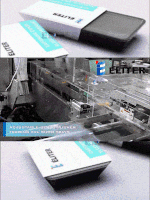Carton vs. Box: What are the Differences?
2023-05-31
When it comes to packaging, there are many different options available. Two of the most common types of packaging are cartons and boxes. While they may look similar at first glance, there are some key differences between these two types of packaging. In this blog, we will explore the differences between cartons and boxes, and help you decide which one is right for your packaging needs.
Cartons
A carton is a type of packaging made from paperboard or corrugated cardboard. It typically has a rectangular shape, with aps on the top and bottom that can be folded over to close the package. Cartons are commonly used for food products, such as cereal, crackers, and frozen dinners, as well as for household items like soap and tissues.
There are several different types of cartons, each with its own unique features. These include:
- Folding cartons – these are pre-glued cartons that are shipped at and then folded into shape when they are ready to be filled.
- Rigid setup boxes – these are high-end cartons that are made from thicker paperboard and are designed to provide a premium look and feel.
- Corrugated boxes – these are cartons that are made from corrugated cardboard, which provides extra strength and durability.
One of the key advantages of cartons is their versatility. They can be customized to fit a wide range of products, and can be printed with branding and other information to help promote the product inside. Cartons are also easy to store and transport, as they can be shipped at and then assembled when needed.
Boxes
A box is a type of packaging that is typically made from corrugated cardboard. Unlike cartons, which have a rectangular shape, boxes can come in a variety of shapes and sizes. They are commonly used for shipping and storage, as they provide protection for the contents inside.
There are several different types of boxes, each with its own unique features. These include:
- Regular slotted containers (RSCs) – these are the most common type of box, and are typically used for shipping.
- Full overlap boxes – these boxes have aps that fully overlap each other, providing extra protection for the contents inside.
- Half-slotted containers (HSCs) – these boxes have only one set of aps, making them easier to pack and unpack.
One of the key advantages of boxes is their strength. Corrugated cardboard provides excellent protection for the contents inside, making boxes ideal for shipping and storage. Boxes can also be customized with branding and other information, helping to promote the product inside.
Compare Carton and Box – What are the differences in their definitions?
In general, the terms “carton” and “box” are often used interchangeably, but there are some differences in their definitions.
A carton is typically a container made of paperboard or corrugated fiberboard that is used for packaging products. It is usually lightweight and can be easily folded and assembled. Cartons are commonly used for food and beverage packaging, as well as for packaging household items, such as soap, cosmetics, and medicines.
On the other hand, a box is a more generic term that can refer to any type of container made of various materials, such as paper, cardboard, plastic, metal, or wood. Boxes come in different shapes, sizes, and designs, and they can be used for a wide range of purposes, from shipping and storage to gift wrapping and display.
So, while both cartons and boxes are used for packaging products, cartons are typically made of paper-based materials and are used specifically for certain types of products, while boxes can be made of various materials and have more versatile applications.
Cartons vs. Boxes: Which is Right for You?
So, which type of packaging is right for your needs? The answer depends on several factors, including the size and shape of your product, the level of protection required, and the type of printing or labeling you need.
If you are packaging a smaller product, such as a food item or household item, a carton may be the best option. Cartons provide excellent protection for these types of products, and can be customized with branding and other information to help promote the product inside.
If you are shipping larger items, such as electronics or furniture, a box may be the better choice. Boxes provide extra protection for the contents inside, and can be customized with branding and other information to help promote your brand.
Ultimately, the decision between cartons and boxes will depend on your specific packaging needs. By considering factors like product size, protection requirements, and branding needs, you can choose the packaging solution that is right for you.




